#Jacobite
Text
No little german boy, don’t go to england and take the crown when James and Charles Stuart both have stronger claims to the throne!
“Oh Mein Gott Zees Is Ein Countree of Scottsfightton!”
#jacobite#jacobite rebellion#in honor of the coronation next weekend - DOWN WITH THE HANNOVER PRETENDERS#/for not being put on a watchlist reasons: this is a JOKE/#brithist#History#George I: the original little german boy#eurohist
69 notes
·
View notes
Text

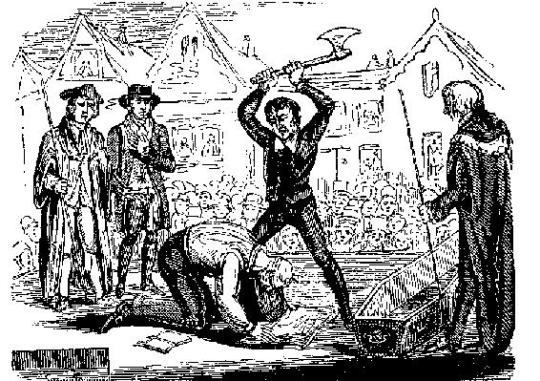
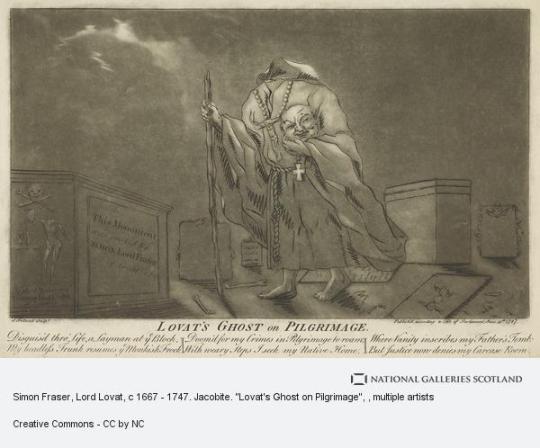

On 9th April 1747 Simon Fraser, Lord Lovat, the leading Scottish Jacobite rebel was beheaded on Tower Green.
A longer post than normal from me as in my opinion Simon Fraser was one of the most interesting characters in Jacobite history. A man of contrary, he was known to be very kind to the lesser clansmen taking a paternal interest in their affairs. A quote regarding him says that….“Generally he had a bag of farthings for when he walked abroad the contents of which he distributed among any beggars whom he met. He would stop a man on the road; inquire how many children he had; offer him sound advice; and promise to redress his grievances if he had any”
In his own estimate, he took care his clansmen were ‘always well-clothed and well-armed, after the Highland fashion, and not to suffer them to wear low-country clothes’ Lovat was also a brute of a man forcing a young woman into marriage and raping her in an attempt to legitimise the union. Lovat has become more well know lately thanks to Outlander, where in their world he is grandfather to the main protagonist Jamie Fraser and played brilliantly by the fine Scottish actor Clive Russell. Back in the real world he has been in the news in the recent past, I shall cover that at the end of this post.
Born in 1667 into the ancient clan who fought with distinction in the Wars of Independence – Sir Simon Fraser was one of the co-victors of the Battle of Roslin and his sons were close friends of Robert the Bruce, Alexander marrying Bruce’s sister Mary – Simon was the second son of Thomas Fraser of Beaufort who was closely related to Lord Hugh Fraser of Lovat, chief of clan Fraser.
Simon became his father’s heir when his elder brother was killed fighting alongside Bonnie Dundee against the forces of King William III at the Battle of Killiecrankie in 1689. He was still nowhere near being clan chief, however, and took himself off to Aberdeen University from which he graduated in 1695. Lord Hugh Fraser, the 9th Lord Lovat, was a weak man who unexpectedly signed over the clan leadership to Simon’s father in 1696.
Lord John Murray, Earl of Tullibardine and the most powerful man in Scotland, disputed the succession and fell out spectacularly with Simon in Edinburgh. The young Fraser hothead duly went north to Castle Dounie to try and persuade Hugh’s widow Amelia to give him the hand of her daughter, also Amelia, in a dynastic marriage that would seal his succession. Tullibardine was having none of it and moved his niece to the Murray stronghold, Blair Castle, where he planned to marry her off to Alexander Fraser, heir to the Lordship of Saltoun.
Simon retaliated by kidnapping Alexander and frightening him away, and to make matters worse in October, 1697, he went back to Castle Dounie and forced the widow Amelia into a sham wedding, raping her to consummate the “marriage”.
Tullibardine ensured Simon and his father were declared outlaws and when old Thomas died in 1699, Simon was unable to legally claim his title as 11th Lord Lovat which later passed to one Alexander Mackenzie who had legally married the younger Amelia.
Simon Fraser somehow managed to persuade King William that he was no threat, despite having his own personal army, and he was pardoned in 1700, only to be declared an outlaw again the following year over the forced marriage and rape.
Simon went off to the court of the Stuarts in France where he devised the plans that were eventually used in the 1715 and 1745 uprisings. Long before the former, however, Simon was double dealing, giving Queen Anne information about the plans of James, the Old Pretender. He was found out and King Louis XIV clapped him in jail for three years.
Even after he was released he was prevented from travelling to Scotland and thus missed the Act of Union which he opposed.
Still desperate to get his Lovat title and the chieftainship of his clan back, Simon sided with the forces of the new King, George I, during the ’15, and was given back his title as a reward, with Alexander Mackenzie imprisoned for being a Jacobite. The two men would fight in the courts for the next 15 years as to who was entitled to the income of the estate. Simon eventually won and spent his time building up the Fraser estates and wealth, even taking command of one of the Independent Companies of Highland soldiers established by the Hanoverian regime – the Fraser Highlanders.
As I said early Fraser was a man of contrary and to me was very like “Bobbing John” The Earl of Mar another Jacobite who a tendency to shift back and forth from faction to faction, no sooner had Fraser built up this “Hanoverian” army that he started openly campaigning for the restoration of the Stuarts. The Government responded by cancelling his military role.
When Bonnie Prince Charles landed in Scotland he was still playing games.
He allowed his sons to fight for the Stuarts, but stayed at home himself “loudly lamenting the wilful disobedience of children,” as Sarah Fraser has put it. Lovat did meet Charles, however, and expressed his anger at the lack of “siller” which he knew would be necessary for a successful campaign. They met again after Culloden, at which Clan Fraser fought bravely and suffered many casualties, and Lovat advised the prince to get away and re-form his forces. Charles fled through the heather, as we know, and made it to France while anyone associated with the Bonnie Prince was hunted down. The Duke of Cumberland’s troops were not taking any more games from Fraser and burned Castle Dounie.
Lovat managed to make it to Loch Morar but was captured there while hiding in a hollow tree. Although approaching his 80th birthday, The Fox was taken south to London.
He pled not guilty but his trial was a formality and he must have know his fate would be the same as previous nobles, the Earls of Kilmarnock, Balmerino and Derwentwater who were executed for treason the previous year.
At his trial, ever the Fox he insisted strongly upon his affection for the reigning family. Such were the characteristics of Simon Fraser, but of course he was found guilty the sentence, hanging, drawing and quartering was commuted later to a mere beheading by the King.
In a way, Lovat had the last laugh. Newspapers and pamphlets of the time recorded that as he was led out to the scaffold on Thursday, April 9, 1947, a wooden stand that had been erected near the Tower to seat crowds eager to see the execution collapsed sending hundreds plunging down. At least nine people died and dozens were injured, which amused Lovat – the phrase ‘laughing your head off’ is said to date from that event.
According to a woodcut print made on that fateful day, Lovat “with some composure laid his head on the block which the executioner took off with a single blow.”
As I mentioned at the top Lovat has been in the news quite recently. Simon had requested burial at the family mausoleum at Wardlaw near Inverness and the government initially agreed but changed its mind thinking his body could become a rallying point for further trouble. He was therefore buried in the floor of the chapel within the Tower of London, St. Peter ad Vincula. The chapel was refurbished in the 19th century and the floor was relaid. One of the coffins uncovered during the works had the nameplate of ‘Lord Lovat’. The names of those found are now recorded on a plaque on the wall of the chapel.
Fraser folklore, and written in several books says that his body was spirited away from London, the stories even go so far as to name the boat ‘The Pledger’ that sailed north to The Beauly Firth, where he was taken to the family mausoleum, there is even a plaque in the crypt that reads “In this coffin are laid the remains of Simon Lord Fraser of Lovat who, after twenty years in His own Land and abroad with the greatest distinction and renown, at the risk of his own life, restored and preserved his race, clan and household from the tyranny of the Athol and the treacherous plotting of the Mackenzies of Tarbat. To preserve an ancient house is not the greatest credit. Nor is there any honour for the enemy who despoiled it. Although that enemy was strong in his plotting and unrelenting warfare, yet Simon who was also skillful and cunning defeated him in war.“
In 2018 the headless skeleton inside the coffin was exhumed to be examined by experts from the University of Dundee in January this year they announced that the bones in the coffin did not belong to Simon Fraser, but to a young woman. So it looks like his body did end up rotting in The Tower’s Chapel, although the Frasers will still tell you otherwise.
Scottish actor Clive Russell played The Old Fox in the television adaptation off Outlander.
13 notes
·
View notes
Text
Bonnie Prince Charlie arrived in Scotland in 1745 with the dream of restoring the Stuart dynasty to the throne. He brought with him a treasure trove of gold coins, but it was never seen again after the Battle of Culloden. Where did it go?
19 notes
·
View notes
Text
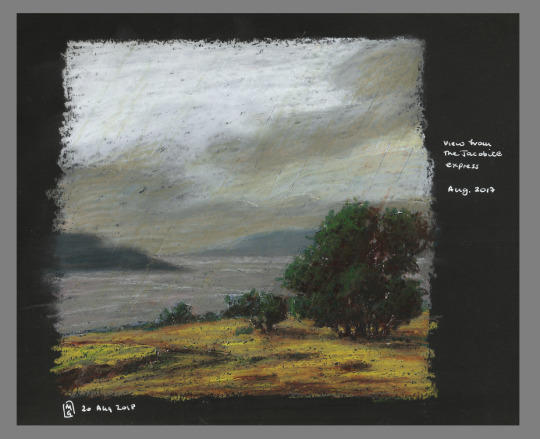
An old oil pastel sketch I did some years ago of a view from the Jacobite steam train on the West Highland Line. Going on that train journey was a super special treat for me.
I probably have this sketch somewhere in my studio, but no idea where.
#Scotland#Scottish Landscape#Jacobite#Stream Train#Oil Pastel#Oil Pastel Artwork#painting#artwork#Scottish Artist#Made In Scotland#Landscape#Landscape Painting#Trees#art
14 notes
·
View notes
Photo

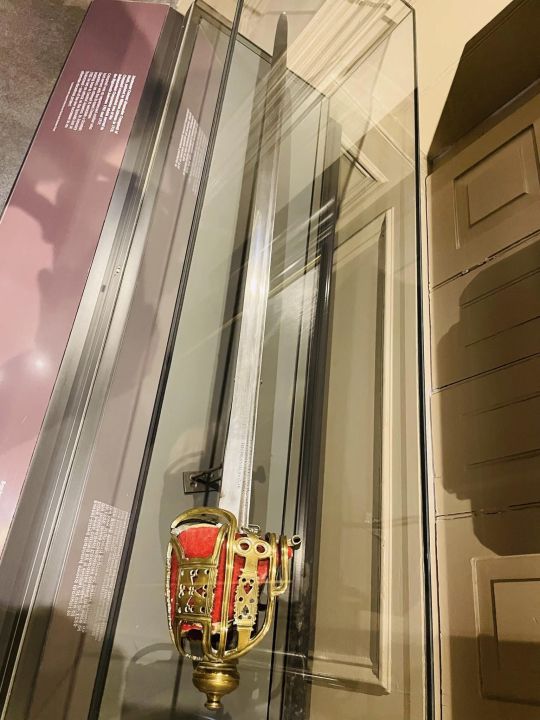
Broadsword believed to have belonged to a Black Watch officer, likely seeing service during the War of the Austrian Success/1745 Jacobite Rising and the Seven Years War.
Also for some weird reason even though the pics are the right way up Tumblr turns them like this, so yeah.
#sword#broadsword#black watch#history#military history#18th century#british army#scotland#scottish#highlander#jacobite
156 notes
·
View notes
Text

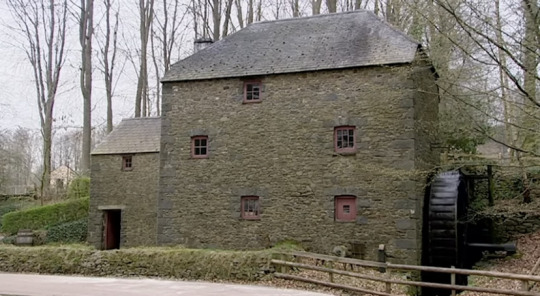
Tales From the Green Valley (2004)
#tales from the green valley#history#welsh#medieval welsh#welsh history#wales#cymru#wales documentary#medieval#medieval history#Jacobite#17th century#17th century house#1600s#1600s fashion#farming#historic aesthetic#historic garden#historic buildings#historical food#historic fashion#archaeology#stuart#english cottage#english countryside#country aesthetic#countryside aesthetic#cottagecore#cottage vibes#cottage garden
45 notes
·
View notes
Text





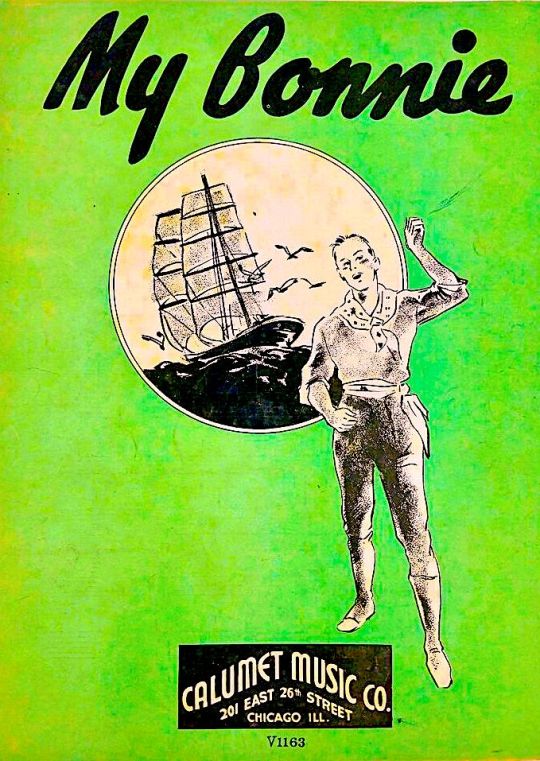

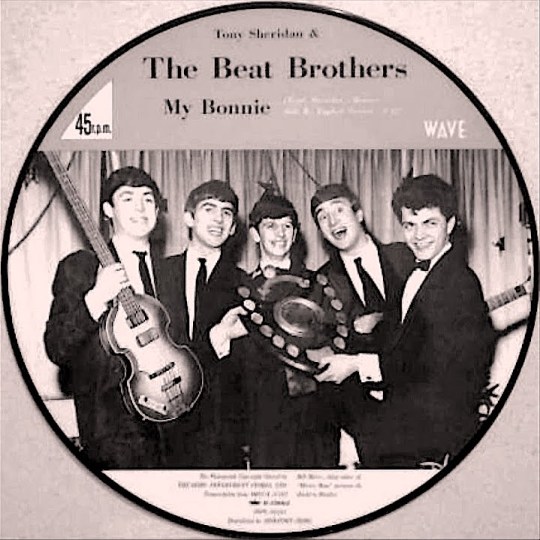

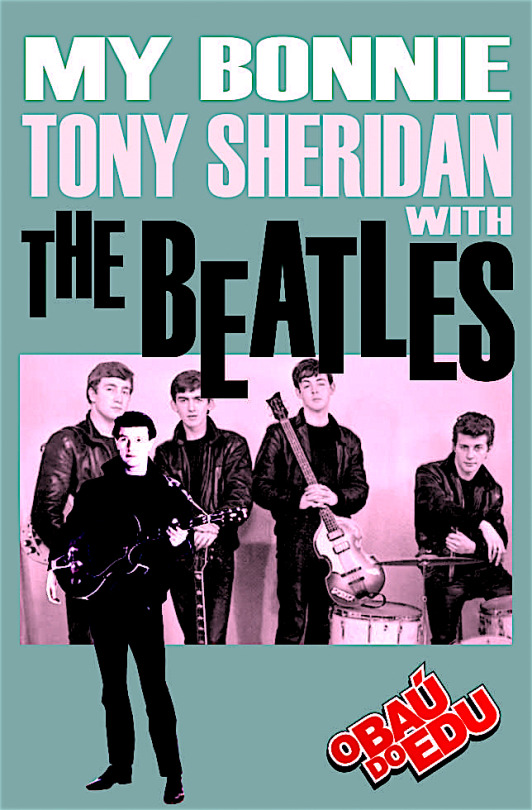
HAPPY BIRTHDAY to “My Bonnie,” the 1962 single by Tony Sheridan & The Beatles. Like millions of kids, I learned “My Bonnie” in elementary school, and it translates to a simple romantic theme of longing for one’s sweetheart from far away. However, in 1746 it was a political insurrection toast sung by Jacobites in Scotland, tributing the exiled “Bonnie” Prince Charles Edward Stuart (“Bonnie” = “highly favored” in Scottish vernacular). Fast forward to 1961-62: Tony Sheridan was a star performer who hired The Beatles (a.k.a. The Beat Brothers) to back him for gigs and recordings, and their rock’n’roll remake of “My Bonnie” was a minor hit. 2 years later Beatlemania took hold and the track was reissued as a Beatles record (it’s still an entry in studies of Fab Four roots). Their version inspired me to do it, punking it up with influence from David Bowie (“Hang on to Yourself”), Dave Edmunds, and The Sex Pistols. Listen here:
#Bonnie #MyBonnie #TonySheridan #Beatles #BeatBrothers #Jacobite #Scotland #PrinceCharles #rocknroll #DavidBowie #HangontoYourself #ZiggyStardust #DaveEdmunds #SexPistols #JohnnyJBlair #SingeratLarge
#johnny j blair#music#singer at large#san francisco#pop rock#Bonnie#My Bonnie#Tony Sheridan#Beatles#Beat Brothers#Scotland#Jacobite#Prince Charles#David Bowie#Ziggy Stardust#Dave Edmunds#Sex Pistols
3 notes
·
View notes
Text
this is not King Charles III

He is
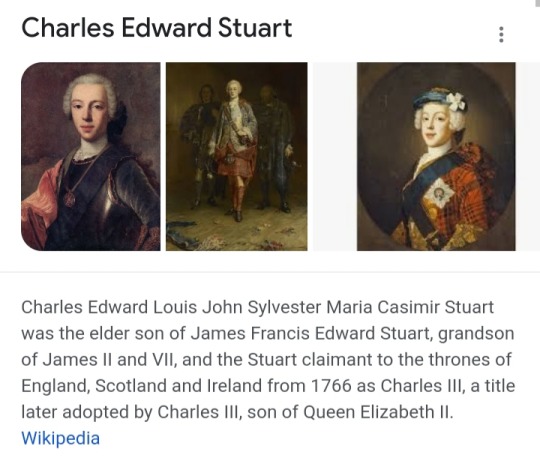

#King Charles III#Bonnie prince charlie#Charles edward stuart#Jacobite#Some of you may have been wondering about my political leanings#Now you know: I'm a jacobite#I dream of the day when my bonnie prince charlie takes his rightful place on the throne my lads
23 notes
·
View notes
Text

John Graham of Claverhouse, Viscount Dundee. David Paton, about 1670.
“The truth of one of this military commander's nicknames, 'Bonnie Dundee', can be seen in this delicate image of a very handsome young man. His earned his other nickname, 'Bloody Clavers', for his persecution of Scottish presbyterians, whose form of worship was at that time forbidden by the government. When William of Orange invaded England in 1688, he supported James VII and II. After James fled to France, Dundee raised the Highland clans to fight for the Jacobite cause. His army won a resounding victory at the Battle of Killiecrankie on 27 July 1689, but Dundee was killed. Having lost their charismatic leader, his men disbanded and returned home.” via the National Galleries of Scotland.
6 notes
·
View notes
Link
During this period [1681-1734], more than a dozen embassies from the Moroccan Empire and the Ottoman Regencies of Algiers, Tunis, and Tripolitania visited London and the surrounding regions. They were treated to a wide range of public performances and state visits, many of which were reported in newspapers for the vicarious enjoyment of distant readers, and soon advertisements began to appear that included the ambassadors, with their exotic habits and clothing, as part of the spectacle for viewers of theatre...
...We can observe how ambassadors were taken to certain available plays during their stays but not others, perhaps as they conveyed more subtle messages. For example, Elkanah Settle’s Heir of Morocco, a play lionising a Moroccan rebel leader later defeated by ben Haddou’s master, premiered during his visit in 1682, but we have no record of ben Haddou seeing it; instead, he was taken to Coriolanus. [This was a Jacobite-influenced adaptation of Shakespeare’s Coriolanus by Nahum Tate; it is unclear precisely the relation to Morocco, but evident that observers understood a link was intended.]
And there are hints of this deliberate action in repeated plays, which evidently built an association with the Maghreb. Moroccan ambassadors were taken to see Shakespeare’s Henry IV in 1710 and again in 1724: the play’s themes of civil war and royal legitimacy, courage and betrayal perhaps rang familiar to Moroccans whose country had been wracked by a century of internecine warfare.
#shakespeare#william shakespeare#theater#theatre#theater history#performance#coriolanus#ambassador#soft power#morocco#ottoman#nahum tate#jacobite#henry iv#diplomacy#london#audiences
3 notes
·
View notes
Photo

Posted @withregram • @blue_lunicorne Always a Slytherin 🐍✨ Entre rencontre avec Tom Felton et son flou artistique, le retour dans la Grande Salle et la Salle Commune, les leçons de vols, le Jacobite et l’hommage à Dumbledore, le retour en France est brutal ! #wbtourlondonharrypotter #tomfelton #jacobite #slytherin #beauxbatons #quidditch #alnwickcastle #hogwarts #harrypotter #magicaleventsfrance https://www.instagram.com/p/ChJs5snqJ_4/?igshid=NGJjMDIxMWI=
#wbtourlondonharrypotter#tomfelton#jacobite#slytherin#beauxbatons#quidditch#alnwickcastle#hogwarts#harrypotter#magicaleventsfrance
2 notes
·
View notes
Text
Les magnifiques paysages sauvages de la vallée de Glen Coe
Nouvel article publié sur https://www.2tout2rien.fr/les-magnifiques-paysages-sauvages-de-la-vallee-de-glen-coe/
Les magnifiques paysages sauvages de la vallée de Glen Coe

#Ballachulish#braveheart#ecosse#film#glencoe#Harry Potter#Jacobite#James Bond#lac#loch#Lochaber#montagne#paysage#riviere#skyfall#vallee#vidéo#cinema#imxok#nature#voyage
0 notes
Text

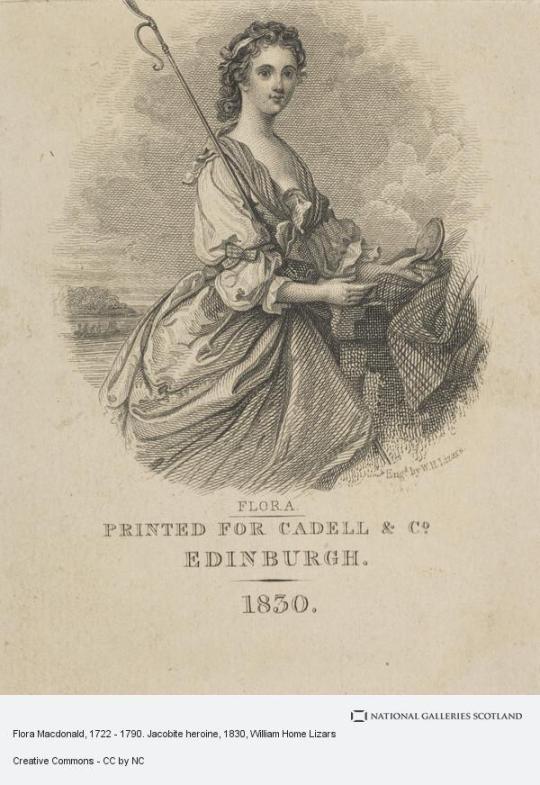
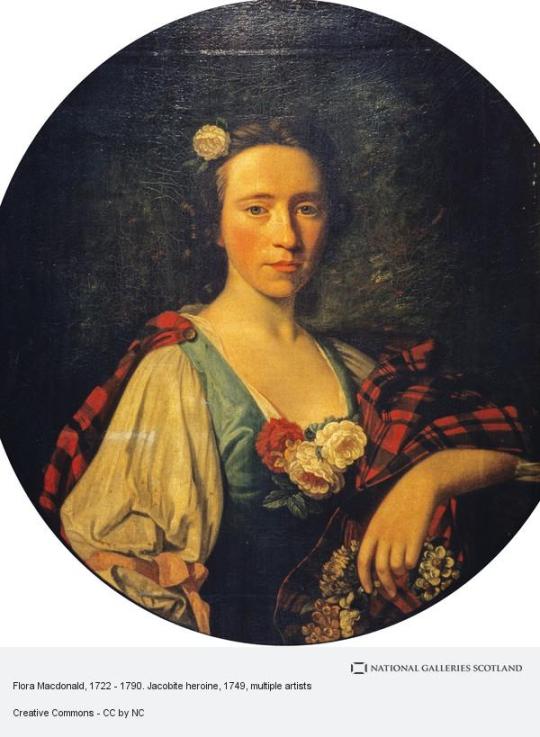


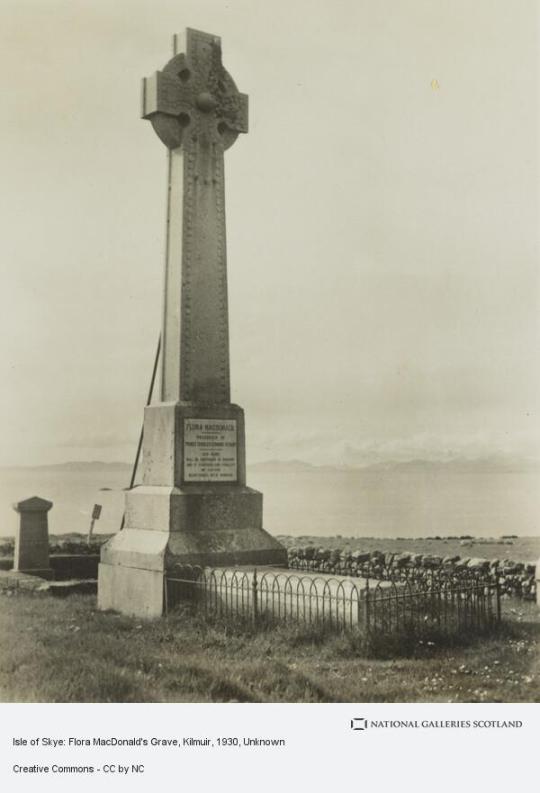
On March 5th 1790, Flora MacDonald, the Jacobite heroine, died.
Flora is still one of the most romanticise figures in Scottish history, much has been written about her helping Charles Edward Stuart after his escape from Culloden when he was the most hunted man in Scotland.
Flora Macdonald was born at Milton, on South Uist, where you can still see the ruins of her childhood home. She grew up in the household of the chief of the Macdonalds of Clanranald, who firmly supported the Jacobite cause. When Bonnie Prince Charlie escaped following the Battle of Culloden in 1746 he went into hiding, depending on supporters to shelter him and hide him from his Hanoverian pursuers led by the Duke of Cumberland. At length, he arrived on the island of Benbecula, where it was decided that he should move on to Skye.
The island was under travel restrictions, and the prince could not take the risk of being spotted. A Jacobite supporter and distant kinsman named Captain Conn O'Neill asked Flora to help Charles escape. Macdonald herself did not support the Jacobite cause, but she was moved by the plight of the Jacobites after the Battle of Culloden, and at length she agreed. She later said that she acted from charity, and would have helped the Duke of Cumberland had she found him in a similar situation.
She obtained permission from Hugh Macdonald, commander of the local militia and her stepfather, to leave Benbecula. She was allowed to take two servants, and a crew of six sailors. Bonnie Prince Charlie was dressed as an Irish spinning maid named Betty Burke, and in that guise he sailed with Flora to Skye on 27th June 1746.
Unlike the scene made famous in the popular ‘Skye Boat Song’, the Prince did not leave baffled foes standing on the shore, and managed to make the crossing unchallenged. From Skye, he made his way at length to Moidart, where he boarded a French ship and escaped to refuge in Europe.
When Flora Macdonald’s role in the escape came to light she was arrested and imprisoned in the Tower of London. Though she had committed treason by helping Bonnie Prince Charlie, the public, even staunch Hanoverians, regarded her as a heroic figure, primarily because she was a woman, I have little doubt if it had been a man that helped the Prince in a similar way, he would have been executed.
She was released from the Tower in 1747. She married Allan Macdonald of Kingsburgh in 1750 and settled at Flodigarry on Skye, where she raised a family. In 1774 the couple and their 5 children emigrated to North Carolina. Her husband Alexander joined a regiment of Royal Highland Emigrants in the American War of Independence, where he was captured. He was released in an exchange of prisoners and took up a command in Nova Scotia.
In 1779 Macdonald returned to Scotland, braving an attack by privateers on the way, and settled on Skye where her husband joined her after the war was over. She died in at Kingsburgh in 1790 and was buried in the graveyard beside the 16th-century church at Kilmuir. Tradition says that she was buried in a shroud made from a bed-sheet used by Bonnie Prince Charlie.
Given her popularity as a Jacobite heroine, it is not surprising that a large memorial was erected by her grave, which became a popular destination for tourists. The original monument to Macdonald was destroyed in a gale in 1871. It was replaced by a new memorial designed by Alexander Ross in 1880. Ross’s design includes a 28 foot high Celtic Cross of granite, rising above a slender rectangular chest tomb, also of granite. A marble plaque was added in 1922.
The epitaph reads, 'Her name will be mentioned in history and if courage and fidelity be virtues, mentioned with honour’. It was written by Dr Samuel Johnson of dictionary fame, who met her during his famous tour of the Hebrides with James Boswell.
In 1884, just 4 years after the monument was erected, the Skye Boat Song was published, and the popular ballad ensured that Macdonald’s fame would not fade.
Here is a less well known song about not just Flora by Brian McNeill, you can tell through the song that Brian has not got a high opinion of the Prince, something I first learnt in his song Few Gods...but holds Flora in the highest esteem as a strong woman.
Strong Women Rule Us All With Their Tears
There’s a moment of your story
That has always haunted me
When you set out in yon open boat
To help the poor man flee
Was Charlie Stuart’s future
Already plain to see
Did you know he’d be a waster on his days
If you did, I’d give the world to find
A single tear you cried
From the Cuillins tae the Carolinas
You showed us one and all
The courage you could call
From the tears that would not fall
From your eyes
And after thirty years
After all that you’d been through
us been marriede haven’ been a
Just a memory to rue
As you watched your husband putting on
His coat of scarlet hue
To go and fight for German Geordie’s crown
But you never tried to hide behind
The dreams of days gone by
From the Cuillins tae the Carolinas
You showed us one and all
The courage you could call
From the tears that would not fall
From your eyes
And there’s times I think I see you
When I find that kind of face
When a woman’s independence
Has kept a woman’s grace
Where confidence and pride
Refuse to know their place
Or hide behind the easy tricks of beauty
For to me your lights are like the chimes
Across the stormy skies
From the Cuillins tae the Carolinas
You showed us one and all
The courage you could call
From the tears that would not fall
From your eyes
From the Cuillins tae the Carolinas
Strong women rule us all
With the courage that they call
When the tears refuse to fall
From their eyes
You can listen to the song here
youtube
13 notes
·
View notes
Text
Efforts are underway to repatriate the remains of an Irish war hero discovered in Belgium. The Sarsfield Homecoming Project believes it has pinpointed Patrick Sarsfield’s burial and is looking forward to welcoming him home.
39 notes
·
View notes
Text
Battle of Culloden

カロデンの戦い(Battle of Culloden)は1746年4月16日にスコットランドのハイランド地方インヴァネス近郊のカロデン湿原(ムア)において、ジャコバイト軍とグレートブリテン王国(以下イギリス又は英国と表記)軍との間で行われた戦いである
#Apr.16.1746.#Jacobite#Battle of Culloden#ウィリアム・オーガスタス#Charles Edward#ジャコバイト上昇の終焉#ブッチャー・カンバーランド#ボニー・プリンス・チャーリー
0 notes
Text
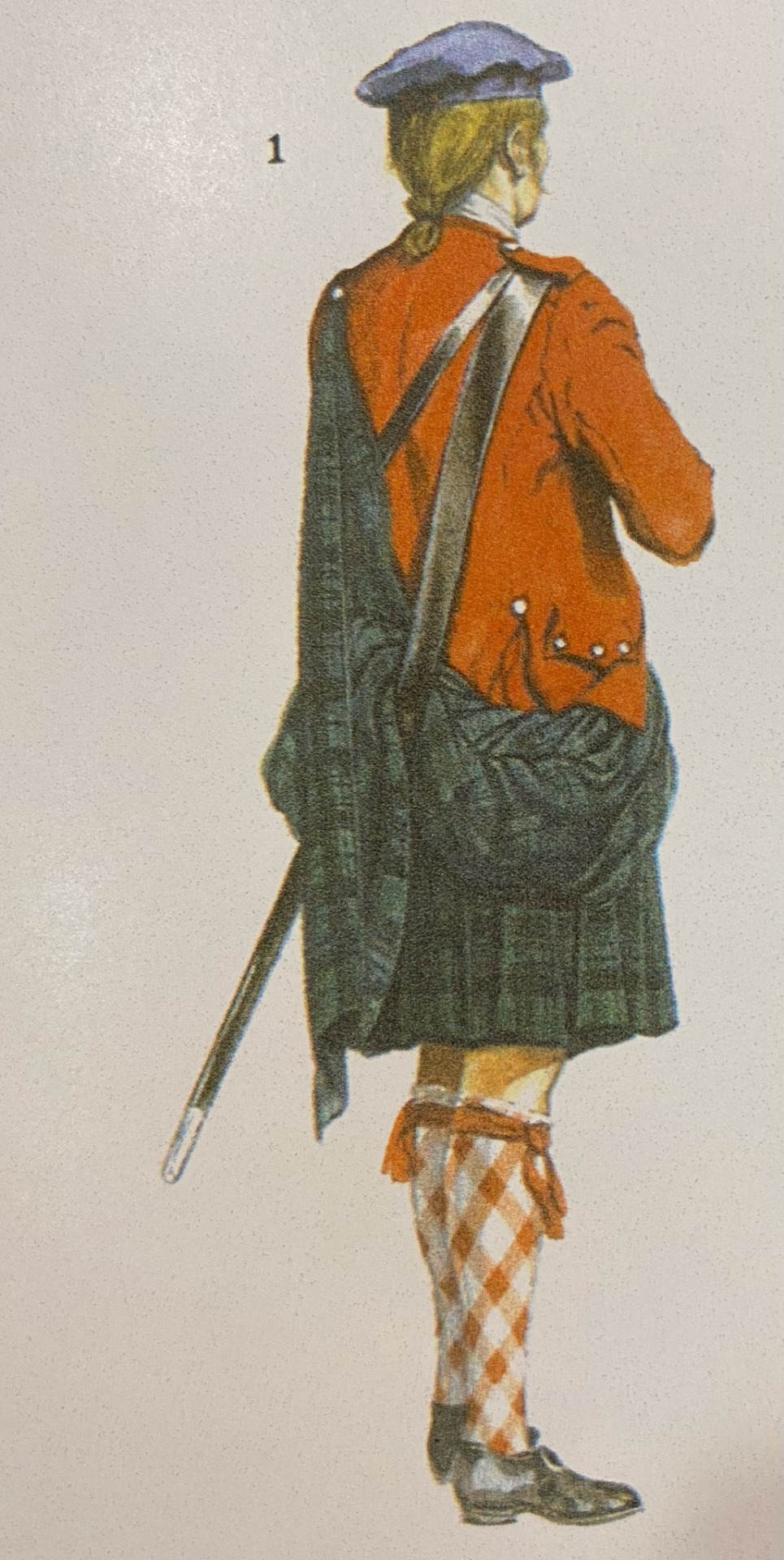
Pro-Government Highlander, 1745.
#history#british army#18th century#military history#Culloden#Jacobite#Jacobites#kilt#Scotland#Scottish#highlander#highlanders
43 notes
·
View notes